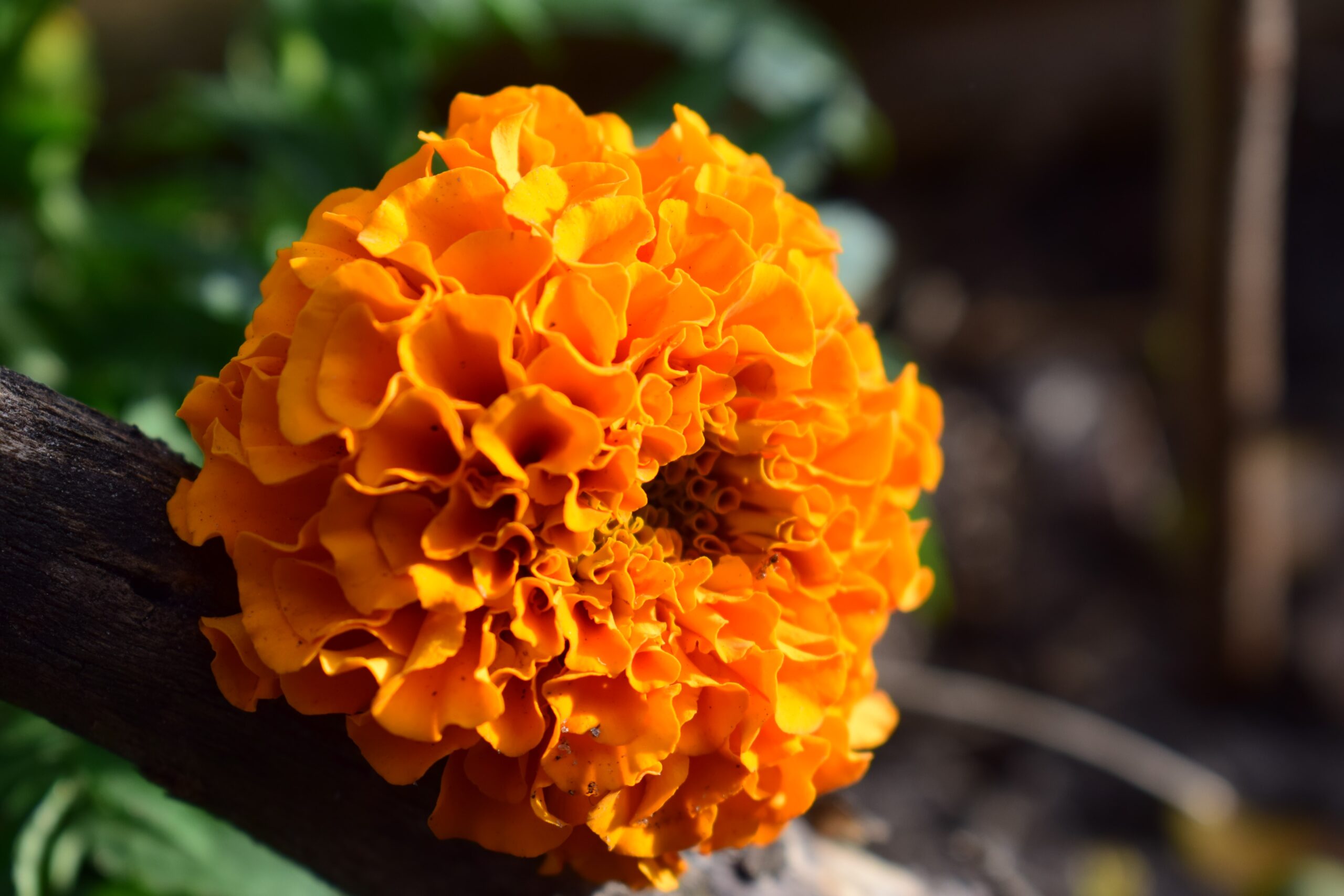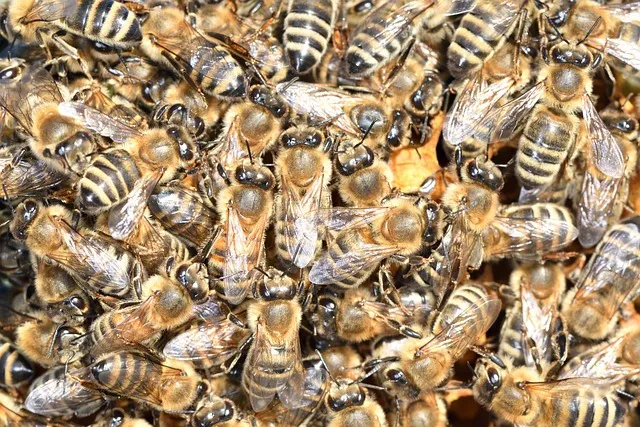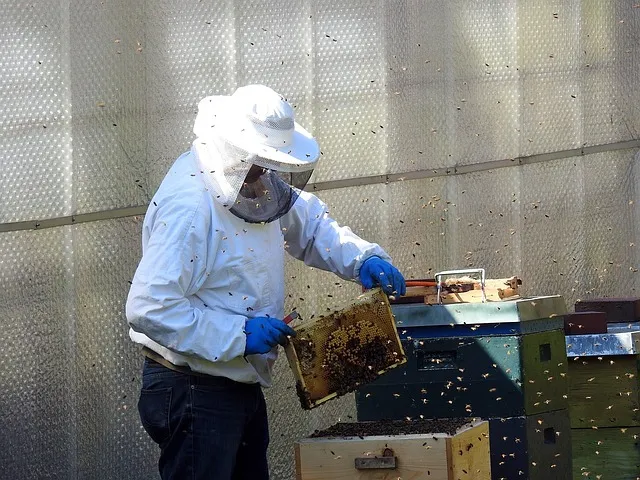Flowers Plants That Do Not Attract Honey Bees and Other Insects
Wasps, butterflies, and bees enjoy our beautiful gardens and play a significant role in our ecology. They are naturally drawn to flowers as they forage for nectar and pollen for their colonies. As much as many flowers need pollinators for aid in their reproductive process, there are few that wade them off. These use other agents of pollination such as wind or water.
You may also want to refrain bees or other pollinators from your garden for some reason. Maybe you are allergic to wasps or bee stings, yet you want a beautiful garden. If this is your goal, you should refrain from planting plants that attract them.
Instead of having an entire garden with bee repelling plants, you can also consider having them on the walkways. Bees are most attracted to purple, blue, yellow, and white blooms with a high fragrance.
Similar Articles you may like to read –
What Color Bees Cannot Recognize?
Will an empty beehive attract bees?
30 Best Flowers That Attract Bees, Butterflies, and Pollinators to Garden
What is bees nectar? and the role of bee’s nectar?
Ways a Plant or Flowers Repel Bees and Other Pollinators
Using Scents That Pollinators Don’t Like
Bees and other pollinators are very sensitive to scent and quickly determine whether they want to pollinate a flower depending on their smell. Plants can repel pollinators by their fragrance or odor.
Colors that pollinators can’t see
Bees are color blind to the red hue. When you particularly want to keep them off in your garden, you can plant flowers that bloom with red flowers.
Carnivorous plants That Eat Flying Insects.
Plants that attract animals or insects prey on the pollinators, such as pitcher plants and venus fly trap.
Flowers With a Trumpet Shape
Pollinators are attracted to flowers with shapes that are suitable to them. Most of them prefer blooms with open stamens. Trumpet-shaped flowers make bees and other insect pollinators hard to access the nectar, although they attract hummingbirds and moths.
Plants That Do not Attract Bees and Other Pollinators
Not many flowers repel pollinators since their symbiotic relationship has been developed over millions of years. You can cultivate a bee-free zone and enjoy your summer without buzzing creatures around with some of these plants.
Marigolds
Marigold is an annual plant that you can grow with minimal effort. It emits a strong, pungent odor that repels wasps and other pollinators. However, honey bees can buzz around the plant seeking nectar from it. Marigold provides constant blooms. It is will serve you right if you are looking for a bloom that is likely to deter most pollinators. You can plant the red varieties to keep off bees.
Red Geranium
Geranium often occurs in shades of red. There are various reasons why it is not attractive to bees: they do not see the color red and contain very minimal or no pollen. It also gives off fragrances that pollinators don’t like. It is perfect if you seek flowers that don’t attract bees. Geraniums do exceptionally well if exposed to the sun for 4-6 hours. You can transport them indoors during the cold season for overwintering.
Red Dianthus
Dianthus also has a nickname of “ Sweet Williams.” It is not attractive to bees and mainly the red shades. It also contains little nectar and pollen.
Petunia
Petunia comes in white, yellow, pink, blue, and purple colors that are good enough to attract the bees. However, their petals are not wide enough to provide an adequate landing area for pollinators. Again the flowers have a small opening and contain little nectar or pollen, offering little or no value to the bees. Although bees and other pollinators will buzz around them, it is unlikely to visit them unless there is a nectar shortage.
Flowering Tobacco
Flowering tobacco, also known as nicotiana, releases its delicious fragrance after sunsets. The flowers that come in pink, violet, white, green, or red colors are narrow-necked, posing a challenge to many pollinators, including bees. However, hummingbirds and moths can draw nectar from them.
Cucumber
Cucumber is a popular vegetable that is added to summer salads. Its bitterness and acidity make bees and wasps loathe it. Cucumbers are tropical vegetables requiring plenty of water and warm weather.
Basil
Although we enjoy the incredible aroma that comes from the basil plant, bees and other pollinators are put off by the fragrance. It adds up as a great choice to repel insects and pests. Basil plant requires full sun and well-drained soils.
Eucalyptus
Eucalyptus gives off a fragrance that is unappealing to bees and wasps. It is pollinated by birds and small mammals such as Koala bears who love its fragrance.
This drought-resistant plant needs a great deal of light.
Citronella
Citronella is famed for repelling mosquitoes; however, its pervasive smell can be offensive to bees and wasps. The plant does superbly in well-drained soils and at least 6 hours of sunlight. It is a versatile plant and can also grow indoors.
Pennyroyal
Pennyroyal has the same scent as the mint. Bees, wasps, and other pollinators find it offensive. It is a relatively small plant making it an ideal choice for containers. This royal plant is easy to grow but needs a lot of moisture so as not to dry out.
Worm Wood
Wormwood contains a poisonous substance(absinthe) that is toxic to insects. The pungent odor alerts wasps and bees of impending danger so as to clear from the danger zone. It also kills other plants in close proximity.
Wormwood requires well-drained soils and direct sunlight. Some people also harvest it to use as an insecticide in their homes or even in their gardens. You can use it while fresh or in dried form. It should never be planted near your edibles because it can stunt or slow down plants due to its insecticidal properties.
Foxglove
Foxglove flowers possess a long neck that puts off the bees. They appear in shades of white, red, cream, and magenta. However, they attract hummingbirds that can reach the nectar sacs through their long beaks. The flower buds and blooms on long and spiky stems.
Datura
Datura is a night-blooming plant that favors nocturnal insects like moths and sphinx. It bears massive white flowers with a flat and trumpet-like shape.
Rose
Rose earns the title of the most romantic flower to express affection. It is a superb addition to your garden, although it requires extra care. Bees are not attracted to roses, especially red ones.
Penstemon
The beardtongue variety has a long and narrow bell-shaped corolla that drives the bees and other pollinator insects away. However, it is dear to hummingbirds who love to pollinate this red flower.
Chrysanthemum
Chrysanthemums, also known as “mums,” have a double corolla that keeps away the bees. It also has low contents of pollen. The flower requires a sunny spot and well-drained soil. It comes in different colors such as white, cream, marron, red, yellow, and pink. The plant doesn’t thrive in cold weather, and you have to shield them when the temperature drops.
Strawflowers
Strawflowers are vibrant flowers that emit a strong odor that wades off the bees. It is a natural bee repellant. This perennial plant can grow up to three feet.
Feverfew
This is a short-lived daisy-looking perennial flower that is not attractive to bees and other pollinators. Most of them avoid this flower because of the aromatic oil on its foliage. Growing it in your garden will deter the bees from the environment due to the fragrance.
Columbine
Columbine flowers have long protruding petals and dangling blossoms. It is hard for bees and other insect pollinators to reach the nectar. It is also difficult for them to land on the flowers.
Hyssop
Hyssop flowers also referred to as Agastache, are usually pollinated by hummingbirds. The flowers have tiny tubules that are too narrow for bees to collect nectar and pollen.
Trumpet Flowers
Trumpets flowers have a weird shape that keeps the bees, wasps, and other pollinators away. Due to their shape, the insects find it difficult to get nectar from them. The plant has multiple varieties: amaryllis, buttercups, honeysuckle, and narcissus. So you have various choices for your garden.
Cloves
Cloves have a strong aroma which is not attractive to bees. You can grow the plants with ease and does well after the first autumn frost.
Pitcher plant
Pitcher plants have a pear-shaped funnel that they use to trap insects. They slip and fall into the pitcher as they land on the plant, where they get stuck on the sticky substance. The plant ends up consuming the insects since they are carnivorous. They are hard to grow because they need distilled or rainwater and perfect soil conditions. The water must be 100% pure.
Rue Plant
The rue plant has leaves with a bitter taste and a pungent smell that originates from the oil-coated gland. The flowers are tiny and insignificant, so they are not appealing to bees, wasps, and other pollinators.
Lemon Balm
This fruity plant with a citrusy fragrance is often used in spruce salads, cooked dishes, and cocktails. The scent we enjoy acts as a powerful repellant for wasps, hornets, and other stinging insects. You can plant it in the garden or as a potted plant.
Lemmon Grass
Lemongrass has a citrus scent that overpowers most insects, including bees and wasps. They are easy to grow and thrive well, even when neglected.
Peonies
Peonies plants have attractive flowers that range from purple, white, red, pink, to yellow. With a wide range of colors, a heavy bloom, and such attractiveness, you may assume that they will be very appealing to the pollinators. However, the toxic scent released by the flowers repels the nectar-seeking insects.
It is a perennial plant that can live up to 100 years. It does well with full exposure to sunlight and well-drained soils. The blooms are usually heavy, and the plant often needs support. You should also shelter it from strong winds.
Red Lilies
The vibrant Red lilies flowers produce abundant nectar and pollen for the pollinators. However, the red color is invisible to the majority of the bee species, unlike other pollinators such as butterflies and hummingbirds. There are some flowers in the lily family that are favorable to bees such as yellow fawn lilies, cat’s ear, and lemon daylilies.
Cardinal Flower
The cardinal flower comes in a red hue that is invisible to bees but can lure hummingbirds into your garden. It has small delicate leaves that burst into vibrant red flowers in late summer.
More articles you may like to read –
What is the best color for bee boxes?
What is the best bee hive design?
Which direction should beehives face?
How deep should a bee box be?
FAQs
Does peppermint repel bees?
Yes, Peppermint helps to keep the bees at bay. Its oil is also used as an insect repellant.
What plants attract bees and wasps?
Various plants attract this duo. Some of these are sunflower, lavender, lilacs, and hyacinth.
What colors are most attractive to bees?
Plants with blues and yellow colors are easily perceived by the bees. The Colour red appears black to them hence not attractive to them.
How do l keep the bees away from my yard?
There are various plants that can repel bees from your yard. Some of these include peppermint, citronella, lemongrass, and hyssop.
Do all flowers attract bees?
Not all flowers attract bees. They are attracted to yellow, blue, and purple flowers with sweet scents, a good landing place, and an abundant source of nectar or pollen.
What is a good repellant for bees?
Bees loathe citronella oil, vegetable oil, lavender oil, olive oil, lemon, and lime. You can apply these defenses to repel the bees.
Does rosemary attract bees?
Rosemary contains blue-purple flowers that attract most bee species, such as bumblebees, honey bees, and mason bees.
Which are the perennial flowers that don’t attract bees?
Some of the perennial flowers that don’t attract bees include cardinal and chrysanthemums.
Are bees attracted to yellow flowers?
Yes, bees are attracted to the yellow color. It is one of their favorite colors.
Do purple flowers attract bees?
Purple flowers in your garden will attract bees and other pollinators.
How do flowers attract bees?
Flowers attract bees with their sweet fragrance and appealing colors. They also prefer flower petals with a good landing place and abundant food resources.



